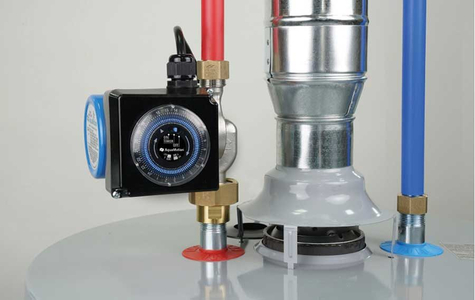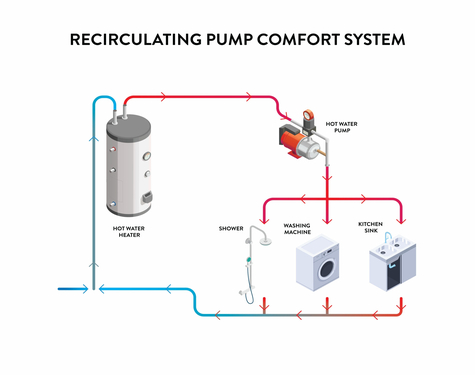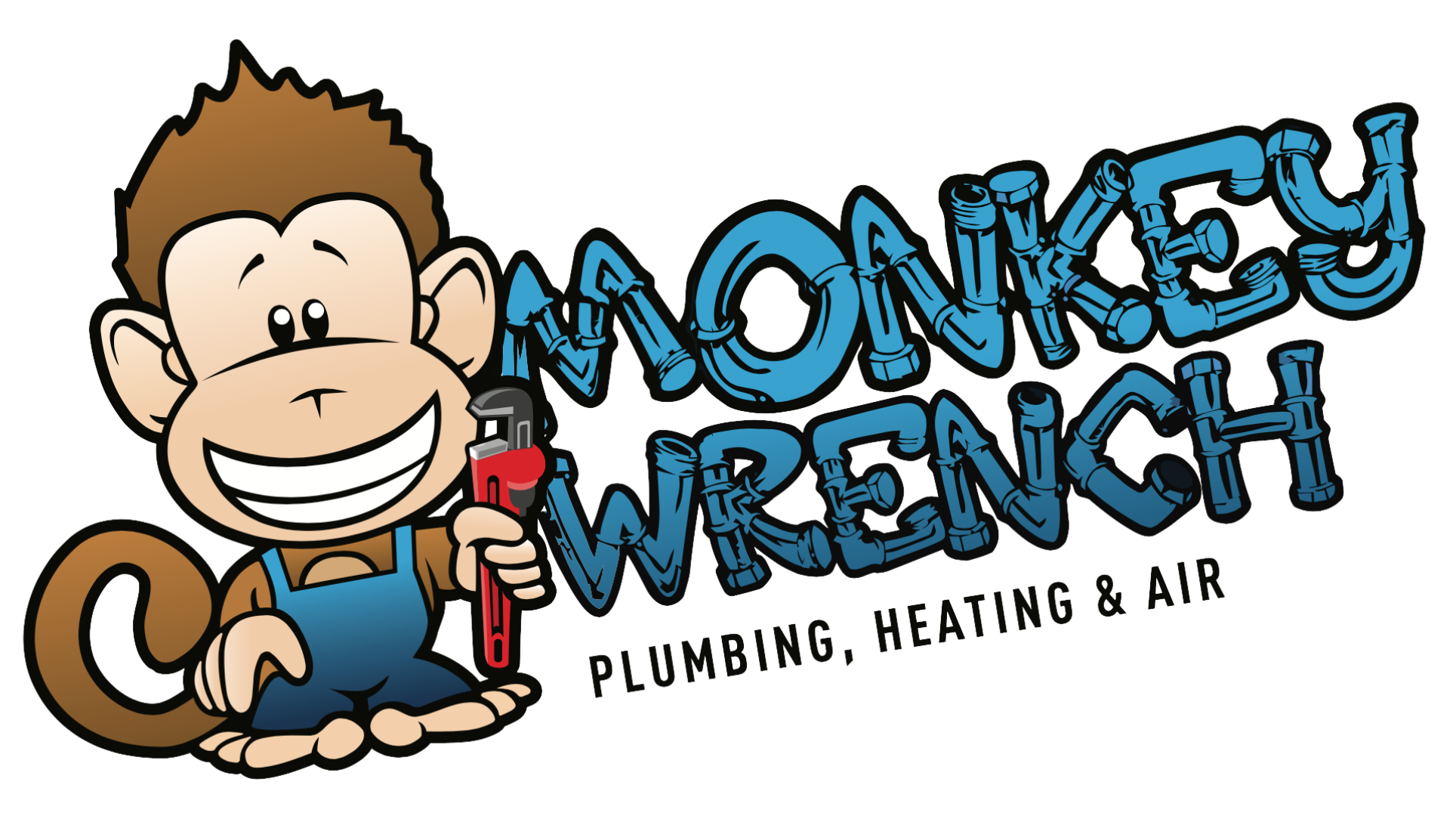What is a Recirculation Pump?
There are many components that contribute to getting the most out of your tankless or conventional water heater, including a recirculation pump. Now, if you’re on this page, you must be thinking about adding a recirculation pump to your water heater, or you may be experiencing issues with your current recirculation pump and are looking for some guidance.
We here at Monkey Wrench Plumbing are dedicated to delivering only the facts about your plumbing questions and have done so since we began in 2007. In this article, I am going to explain to you what a recirculation pump is, along with its different types. I’ll also walk you through costs you may face when purchasing a recirculation pump and its benefits and drawbacks. By the end of this, you will be able to determine whether a recirculation pump is right for you or if you need a replacement.
Let’s get started!
What Is a Recirculation Pump?
A recirculation pump is a device attached to the water heater that is meant to give you hot water instantly to all the fixtures in your home. The device pumps hot water through your hot water pipes and back to the water heater through a “dedicated line” or through a cold water line. Not all water heaters have a recirculation pump, and while not necessary, most technicians do recommend that you do have one as part of your tankless or conventional water heater as it can prevent water waste. Without a recirculation pump, you will have to wait for hot water to reach your fixtures, which means more water waste.

Now that we’ve touched on what a recirculation pump is, let’s move on to how it works!
How Does a Recirculation Pump Work?
While not always included with a conventional or tankless water heater, recirculation pumps play a key role in giving you hot water in your business or home. When you turn on your faucet, the water travels through cold water pipelines, and you have to wait for the water to travel from the heater to the faucet to get hot water. What a recirculation pump does is keep the hot water moving throughout the plumbing system so that hot water is always available.

With the units that come without recirculation pumps built in, you must have the dedicated line and an additional pump that is separate from the heater. Also, with the traditional unit, you must also have a timer for the recirculation pump, as having it on constantly will definitely cost a lot of money.
Types of Recirculation Pumps
There are three different types of recirculation pumps:
- Basic recirculation pumps
- On-demand recirculation pumps
- Time and temperature pumps
Basic recirculation pumps
The basic recirculation pump is constantly moving water through the water heater and pipes. It is the most simple form of a recirculation pump. Someone would choose this option if they have no specific needs to be met but want to add the recirculation pump to their water heater.
On-demand pumps
On-demand pumps only operate when someone turns on the hot water in a sink, tub, or shower. The on-demand pump will continue to push hot water from the water heater until the water flow is turned off or the desired temperature is reached. We would recommend this option for people who are not in constant need of hot water but also want to save on water costs.
Time and temperature pumps
Lastly, time and temperature recirculation pumps turn on at a specific time to pump water until it reaches a certain temperature. Since the pump only operates when needed, it can save a lot of money while still providing instant hot water. This option is best for a home or business that is trying to save money on water.
So we’ve covered what a recirculation pump is and touched on the different types, but you must be asking yourself, “well, how much is this going to cost?”
How Much Does a Recirculation Pump Cost?
Pricing for a recirculation pump can be somewhat tricky. While some tankless and conventional water heaters do, in fact, come with a recirculation pump installed, some do not.
A recirculation pump alone can cost around $800, but you will still need to add the cost of proper installation, which will make the total cost go up to about $1,500 to $2,500.
If you’re looking for a new water heater and are interested in a recirculation pump, Our technicians recommend getting a tankless or conventional water heater with a recirculation pump already installed. While buying a recirculation pump separately and having it installed is definitely possible, our technicians have found that over time it can cause more problems down the road and potentially even cost more money in the long run.
For example, if you were to purchase a water heater without a recirculation pump and the water heater needs to be replaced, you will have to replace not only the water heater but also the pump and fixtures, which will bring up the cost.
To help explain more the potential benefits and problems with recirculation pumps, we broke down the benefits and drawbacks of installing one.
Benefits and Drawbacks of Recirculation Pumps
Benefits
- No wasted water
By having a recirculation pump, you are not wasting water by running it steadily until it reaches the temperature you desire.
- Lower wait time
With a recirculation pump, you also are cutting down the time needed for the hot water to get hot as with the pump giving you instant hot water.
- Cost savings
By cutting down on the wait time and water usage, you are also saving money with the recirculation pump.
Drawbacks
- Wear and tear
By using the recirculation pump, you are putting extra strain on your plumbing system, especially if you have an old one. For example, if you have an old system or old water heater and you add the recirculation pump, it could break prematurely, especially if you don’t do your yearly maintenance on the water heater.
- Hard water
If you have hard water, you will want a filter, or else your recirculation pump can break. If you do not have a filter, hard water will build up and can break the pump and also damage your water heater.
Are Recirculation Pumps For You?
So to wrap things up, a recirculation pump circulates hot water through your hot water pipes and back to the water heater to give you instant hot water. While generally inexpensive when included in a tankless or conventional water heater, having one installed in your is crucial to the lifespan of your water heater. Not having a recirculation pump will waste water as it will force you to wait longer periods of time before actually getting hot water.
We here at Monkey Wrench Plumbing are dedicated to delivering only the facts about your plumbing questions and have done so since we began in 2007. We have shared all this information with you so that you are prepared if and when you are ready to purchase a recirculation pump for your home. Even if you aren’t in the market for a recirculation pump, knowing the different devices that are available for a water heater are key to understanding your unit.
Down below are links to other pages on our sites that further explain how hard water can affect your water heater and how to test for it. Both links can serve as a guide for those of you who are still unsure about what hard water is and how it can affect your plumbing system, along with steps on how to test if you have hard water.
If you have any further questions you can always check out our learning center for answers. Or you can always reach us here at Monkey Wrench Plumbing by calling 310-853-8690.



